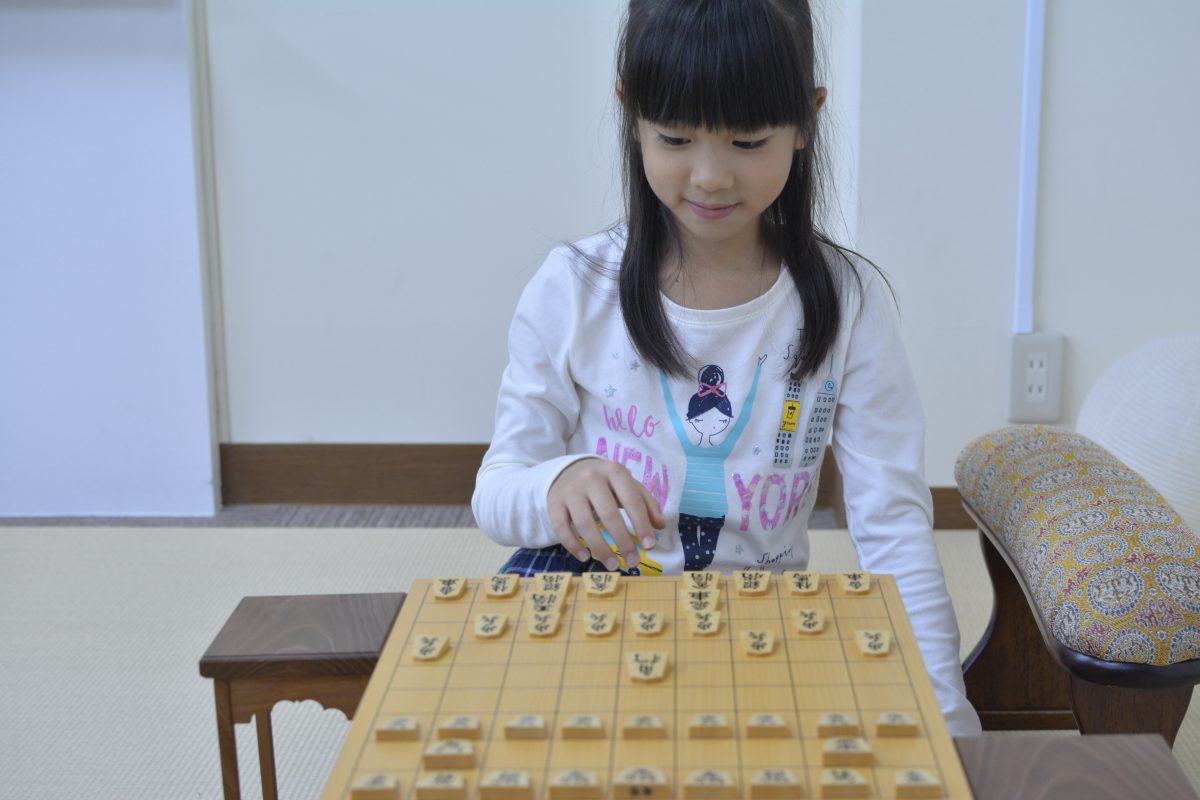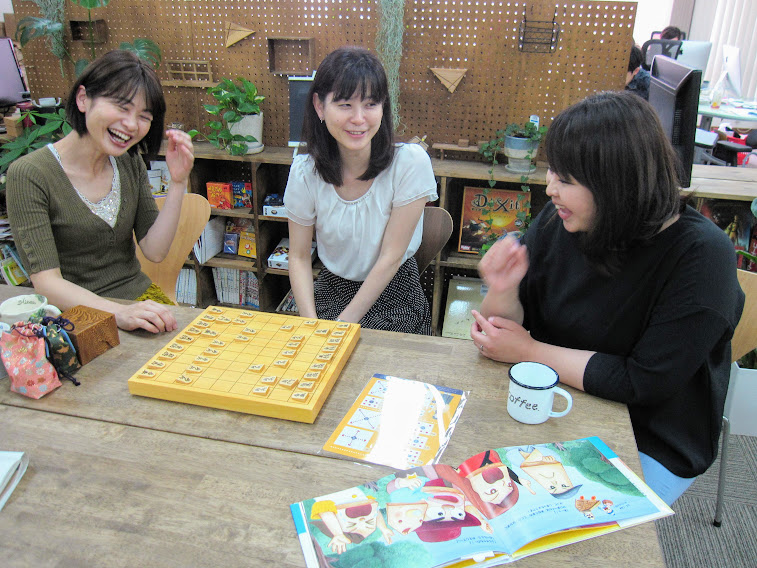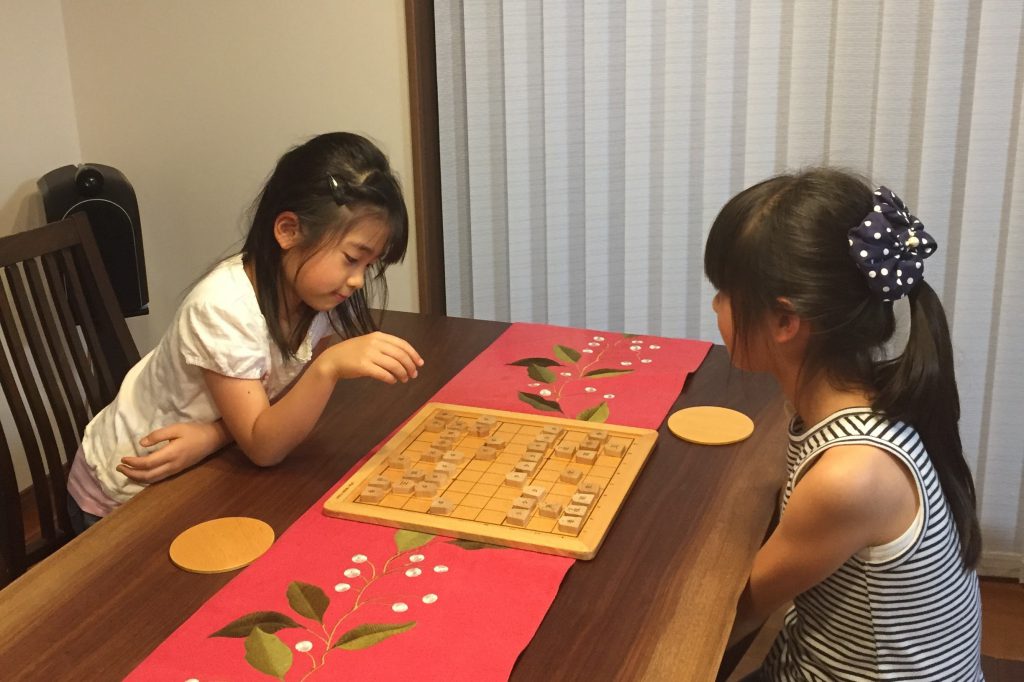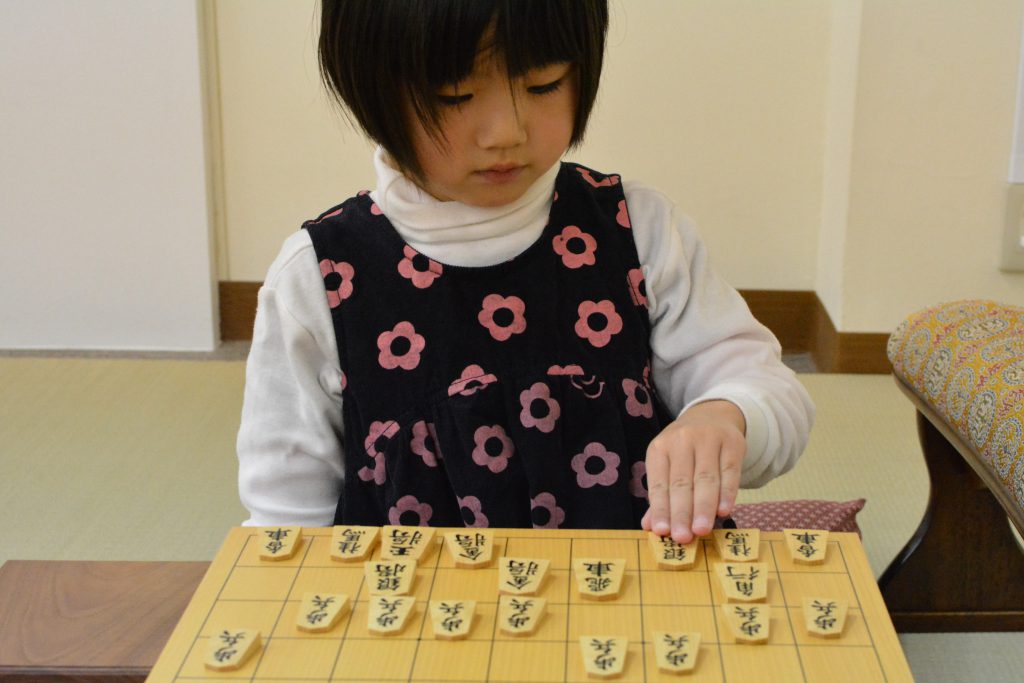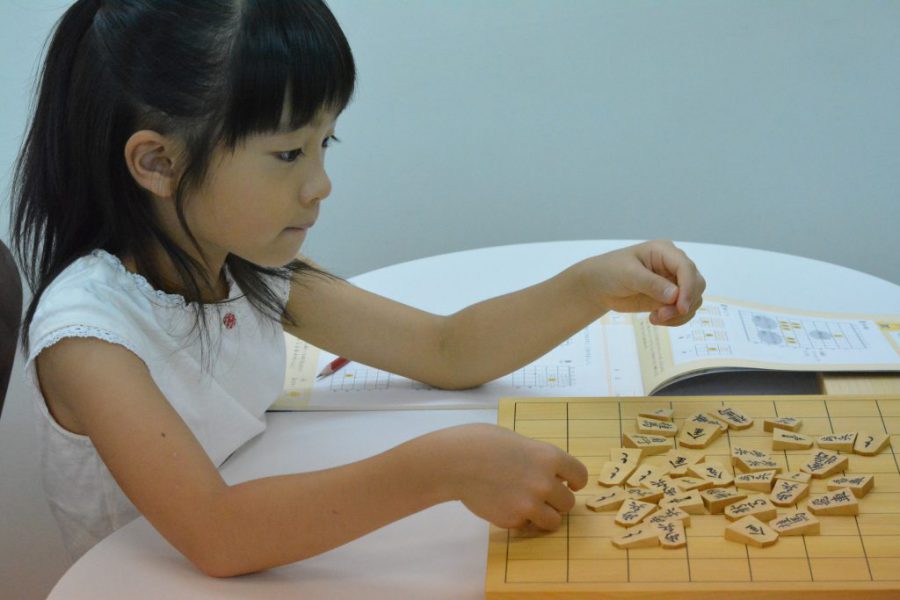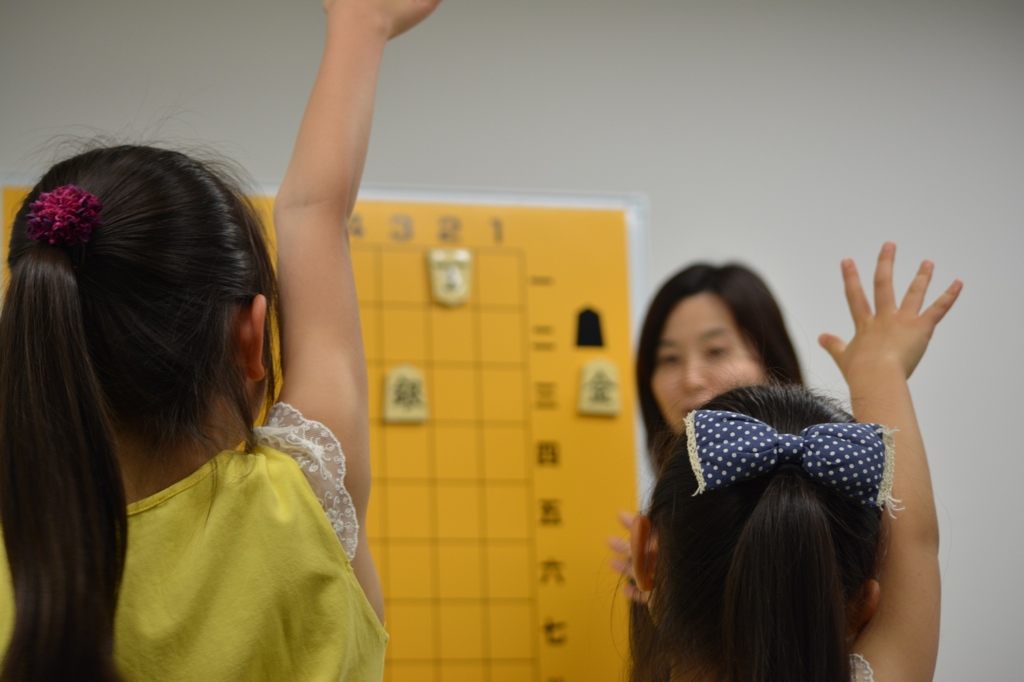I-tsu-tsu Blog
Shogi
-
Shogi Rules – How to Play Shogi – : Step 3-4 Capture a Piece Effectively
A professional Shogi player invites you to the world of Shogi along with traditional Japanese culture. In this series, there are three steps and each step has around 10 lessons. Even though you don’t know about Shogi, through these three steps you will get knowledge to enjoy it. *Please note that the Kanji numbers in pictures are spelled in English in the text. The following Shogi boards have a face with files (vertical rows) numbered 1 through 9 from right to left, and ranks (horizontal rows) designated with Kanji characters, “一” (One) to “九” (Nine), from top to bottom. On the other hand, in the text, each Kanji character is
Akiko Nakakura 7 January 2018
-
Shogi Rules – How to Play Shogi – : Step 3-3 A Value of Each Piece
A professional Shogi player invites you to the world of Shogi along with traditional Japanese culture. In this series, there are three steps and each step has around 10 lessons. Even though you don’t know about Shogi, through these three steps you will get knowledge to enjoy it. Step 3-3: A Value of Each Piece In this lesson, you are going to learn a value of each piece. Shogi has eight kinds of pieces and they are ranked according to the importance level that each piece possess. The difference in piece values could be equivalent to that of piece strengths. Let’s look at levels of piece values in the above
Akiko Nakakura 7 December 2017
-
Shogi Rules – How to Play Shogi – : Step 3-2 How to Describe Piece Moves as A Kifu Notation
A professional Shogi player invites you to the world of Shogi along with traditional Japanese culture. In this series, there are three steps and each step has around 10 lessons. Even though you don’t know about Shogi, through these three steps you will get knowledge to enjoy it. *Please note that the Kanji numbers in pictures are spelled in English in the text. The following Shogi boards have a face with files (vertical rows) numbered 1 through 9 from right to left, and ranks (horizontal rows) designated with Kanji characters, “一” (One) to “九” (Nine), from top to bottom. On the other hand, in the text, each Kanji character is
Akiko Nakakura 1 November 2017
-
Let’s play with a 5 × 5 Shogi Board
Regular Shogi board has 81 squares with nine horizontal rows (ranks) and nine vertical rows (files). I assume that this 9 × 9 board might be a bit difficult to use, especially for children who have just learned the way to move pieces and basic rules. Probably, a 9 × 9 board could be too large for children to capture the whole picture on what is going on the board. Children might lose their focus, and as a result, they might make a piece-movement without enough consideration. Even though they have taken the trouble to master correct ways to move pieces, they might be overwhelmed. 5 × 5 Shogi board
Akiko Nakakura 3 October 2017
-
Working Moms’ Conversation – “Moms, Children, and Shogi …and Fathers?”
Shogi has recently caught on again in Japan thanks to a 14-year-old schoolboy, Sota Fuji, who is a Professional Shogi player with the rank of fourth Dan. I assume that inspired by his historic achievement, more mothers want their children to learn Shogi. Since Shogi has been not so popular among women, however, moms may be wondering if they can help their children to play Shogi. They might not be even sure if Shogi is actually fun. Responding to their concern, I-tsu-tsu members got together to talk about “Shogi and children.” The members were all mothers with children who learn Shoji: Akiko Nakakura with three children, Hisae Ozaki with two
Nae Kanamoto 3 October 2017
-
Shogi Rules – How to Play Shogi – : Step 3-1 Pieces in the Form of Two Letters
A professional Shogi player invites you to the world of Shogi along with traditional Japanese culture. In this series, there are three steps and each step has around 10 lessons. Even though you don’t know about Shogi, through these three steps you will get knowledge to enjoy it. Step 3-1: Pieces in the Form of Two Letters Finally, Step 3 starts. In Step 1 and 2, you learned basic rules and how to move each piece. In this step, you will learn basic techniques to enjoy a game more. For the first day, I’m going to explain about letters on pieces. Do your pieces have one letter or two letters
Akiko Nakakura 1 October 2017
-
Shogi Rules – How to Play Shogi – : Step 2-8 “Set up Pieces”
Explore art of Shogi. A professional Shogi player invites you to the world of Shogi along with traditional Japanese culture. Previous step: We previously learned the basic rules. This time, we are going to learn the way to set up the initial piece positions. Once you put 40 pieces on a Shogi board with 9 × 9 squares, it’s all set! You start a game from this positions. Did you know that there are particular orders for setting up pieces? The most well-known one is “Ohashi style” described below. Most of professional Shogi players adopt this style. In addition, there is “Itou style” as well. The way to set up pieces
Akiko Nakakura 3 August 2017
-
5 Things You Must Know before Your Debut of Shogi Dojo
Today, I will give you some information about Shogi Dojo, or training hall, for those who are planning to debut in Shogi Dojo and want to let your children start to learn Shogi at Shogi Dojo. Today’s article would give you a good motivation in starting to attend Shogi Dojo. We interviewed Ms. Akiko Nakakura, our CEO and a professional Shogi player, who has regularly attended Shogi Dojo since her childhood. She answers to questions you would have. If your view of Shogi is something unfamiliar, today’s article is for you! Q1. What is Shogi Dojo for? A. “Dojo” is a place where you can play Shogi games with various
Hisae Ozaki 3 August 2017
-
Attack or Harass?
Japanese includes many homonyms. Just hearing them, even Japanese whose mother tongue is Japanese get confused with some of them. For example, Japanese “Semeru” that basically refers to offensive content is one of them. It has two meanings, to attack and to harass. You sometimes hear this word during a Shogi game and two meanings are distinguished clearly and used according to the situations. Did you know it? To tell the truth, up till very recently I didn’t use this word, “Semeru”, of different two meanings appropriately in Shogi situations, to attack and to harass. In Shogi, when you are conducting an offensive approach to your opponent’s front line, “Semeru”
Nae Kanamoto 3 August 2017
-
Manners of Shogi That Will Impress Others
There are many manners to play Shogi. Today I will introduce several manners that you don’t necessarily have to follow, but knowing them, or doing them, you would be considered as a well-mannered person. 1. Set up pieces in order of Ohashi style or Itou style. There are two styles of setting up pieces, Ohashi style and Itou style. Both of them were used by and named after two of three major Shogi families of Edo period, Ohashi family and Itou family. Currently, Ohashi style is mainly used, as it is easy to remember (I-tsu-tsu adopts Ohashi style). Actually, complicated Itou style has a deep and cultural connotation. This style
Nae Kanamoto 19 July 2017
-
Shogi Rules – How to Play Shogi – : Step 2-7 Illegal Move (Pieces to Move Nowhere)
Explore Art of ShogiA professional Shogi player invites you to the world of Shogi along with traditional Japanese culture Previously you learnt an illegal move called “Nifu (two pawns).” Let’s learn another illegal move today. If you make an illegal move during a game, you lose a game. So, you need to be careful about an illegal move you will learn today as well as the previous one. As seen in the above, if you move or drop a piece on a square from which the piece has nowhere to go for the next move, your move or drop is illegal. Since a piece has nowhere to go from the position,
Akiko Nakakura 1 July 2017
-
Mate Problem: Jammed with Good Points
There are three major Shogi practice methods: Mate problems, actual games, and replaying a recorded game in Kifu notation. It is said that mate problems are regarded as the paramount among them. Today, I would like to talk about its distinction. (Surely, the other two methods are also very important.) 1. You will get to understand typical patterns observed at the end of the game. Beginner players apt to play an endless game. It is assumed that most beginners tend to focus too much on taking the opponent’s pieces, and to lose their prior purpose of capturing the opponent’s King. This is one of the possible reasons for the beginners’ phenomenon
Akiko Nakakura 2 June 2017
If there is anything we can help you with,or you have any questions,
please do not hesitate to contact us.

